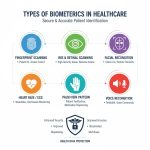In Vitro Diagnostics (IVD) Market is Estimated to Grow at a CAGR of 4.50% from 2022 to 2028
As stated in our extensive report; the Global In vitro Diagnostics (IVD) Market accounted for USD 108.4 Billion in the year 2021.
An increase in diagnostic testing caused by the pandemic is mainly responsible for the expansion of the use of IVD. Growth in the market is anticipated to be driven by the introduction of automated IVD systems into hospitals and laboratories, which will allow for faster, more precise, and error-free diagnosis. In addition, increases in the introduction of new IVD (In vitro Diagnostics (IVD)) products by major manufacturers are also contributing to the market’s expansion. In vitro Diagnostics (IVD) (IVD) products with molecular diagnostic capabilities provide reliable and accurate results.
Segmentation:
The In vitro Diagnostics (IVD) market is segmented on the basis of application and product type. The application market is segmented as Reagents & Kits, Instruments, services, and Data Management Software. Based on technology, the market is segmented as Immunoassay/ Immunochemistry, Clinical chemistry, Molecular diagnostics, Hematology, Microbiology, Coagulation and Hemostasis, Urinalysis and Other Technologies. Based on application the market is segmented as Infectious diseases, Diabetes, Oncology, Cardiology, Drug Testing/ Pharmacogenomics, Autoimmune diseases, HIV/AIDS, Nephrology and Other applications. Based on end-user, the market is segmented as Hospital laboratories, Clinical laboratories, Point-of-care testing centers, Academic institutes, Patients and other end users. Region-wise, the Global In vitro Diagnostics (IVD) Market has been segmented into North America, Europe, North America, Latin America, and Middle East & Africa.
Market Dynamics:
The centralized laboratory using automated analytical testing techniques to identify target analytes continues to be the predominant laboratory testing model in use today. This pattern is already well-established in the fields of clinical chemistry and hematology, and it is currently spreading to others, like immunoassays and molecular diagnostics.
In comparison to traditional diagnostic methods, point-of-care devices are more affordable, simpler to use and produce the quick results needed to start making decisions. The need to organize healthcare services around the patient rather than the practitioner significantly impacts the rising adoption of POCT devices. Because the testing procedure is frequently separated from the consultation, centralized testing only represents a convenient approach for some patients. This specifically affects people who need ongoing monitoring, including numerous blood tests, due to a chronic illness like diabetes. One sign of this need for more practical and efficient care is the development of self-monitoring of blood glucose, which is the largest portion of POC testing.
The necessity to provide care closer to the patient will probably lead to increased testing done outside of the traditional laboratory in the upcoming years. In the previous two decades, the range of tests carried out employing POC testing equipment has significantly increased. This advancement was primarily fueled by well-established technology, including immunosensors, lateral flow strips, and ongoing electronics downsizing & device computing power improvements.
During the forecast period, the In vitro Diagnostics (IVD) market in North America is anticipated to develop at the quickest rate. Throughout the projected period, the area is anticipated to maintain its market dominance. The sector in this area is driven by a number of factors, including the rising frequency of chronic diseases, the rapidly growing senior population, high healthcare costs, and favorable government financing. Additionally, it is projected that the North America market will grow due to the demand for genetic testing to deliver more personalized healthcare, such as for diabetes and cancer.
Conclusion
Development of automated IVD systems for laboratories and hospitals to provide efficient, accurate, and error-free diagnoses, will have a favorable impact on the overall In vitro Diagnostics (IVD) market.
Some of the key players in the Global In vitro Diagnostics (IVD) Market include- Roche Diagnostics (Switzerland), Siemens Healthineers (Germany), Danaher Corporation (US), Abbott (US), and Thermo Fisher Scientific (US), Johnson & Johnson (US), Becton, Dickinson and Company (US), Bio-Rad Laboratories (US), Sysmex Corporation (Japan), bioMérieux (France), DiaSorin (Italy), Ortho Clinical Diagnostics (US), QIAGEN N.V. (Netherlands). and others.
![[Market Research Reports] – Research Google News Blog | VMR.Biz](https://www.vmr.biz/wp-content/uploads/2022/12/logo-removebg-preview.png)











